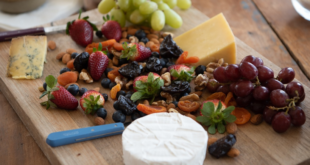Now we all know what a “toast” is, but have you ever wondered where the practice came from and why we refer to a charred piece of bread as one of the same. Well, we found some fascinating background information as well as some guidelines to toasting from “intowine.com”. Take a look below.
The history of toasting
As early as the 6th Century B.C., the Greeks were toasting to the health of their friends for a highly practical reason – to assure them that the wine they were about to drink wasn’t poisoned. To spike the wine with poison had become an all too common means of dealing with social problems – disposing of an enemy, silencing the competition, preventing a messy divorce, and the like. It thus became a symbol of friendship for the host to pour wine from a common pitcher, drink it before his guests, and satisfied that it was a good experience, raise his glass to his friends to do likewise.
The Romans, impressed by the Greeks in general, tended to handle their interpersonal problems similarly. It’s no surprise then, that the practice of toasting was popular at Roman get-togethers as well.
The term toast comes from the Roman practice of dropping a piece of burnt bread into the wine. This was done to temper some of the bad wines the Romans sometimes had to drink. (Much later, even Falstaff said, “put toast in’t” when he was requesting a jug of wine in Shakespeare’s Merry Wives of Windsor.) The charcoal actually reduces the acidity of slightly off wines making them more palatable. In time, the Latin tostus meaning roasted or parched, came to refer to the drink itself. In the 1700’s, party-goers even liked to toast to the health of people not present – usually celebrities and especially beautiful women. A woman, who became the object of many such toasts, came to be known as the “toast of the town”.
You may have wondered just what a roasted slice of bread has to do with the practice of offering a toast? The two couldn’t seem more unrelated, but now you know why.
A guide to toasting
Whatever event you have coming up, be it a wedding, ball or anniversary, you might find yourself having to make a toast. Here is some further advice from “intowine.com” that you might find interesting and useful. However, if not soon, surely, you will be called along to propose a toast at some point in time.
A well made toast can make a simple moment special, as few things in life do. This gracious gesture can be delivered by anyone. All it takes is a little forethought, practice, and a familiarity with some toast etiquette and protocol.
There are no hard-fast rules to toast-making and giving. What follows are guidelines to give you a starting point.
- Be Eloquent, Whimsical, and Witty. Make sure that the toast you are delivering is appropriate to the intended audience and occasion.
- Be Simple. Keep your toast short and to the point. Avoid use of big words. The simplest words often sound the most sincere.
- Be Yourself. Give it from the heart.
- Be Brief. Avoid more than just a few sentences. Don’t use the toast as a soapbox.
- Be Prepared. A good toast is a speech in miniature. Any good orator will tell you, it takes far more work to craft a short message, than a long speech. It takes practice to sound spontaneous. It’s not a bad idea to have two or three short toasts memorized for when the opportunity presents itself. If you’re quoting a well known work, know the context of the lines so as not to leave people reading something else in, between them.
- Be Done. End on a positive note. Clearly define the end by saying “Cheers!”, asking your audience to “Raise your glass,” or some other accepted gesture.
 Vino-Club For Wine Lovers
Vino-Club For Wine Lovers






